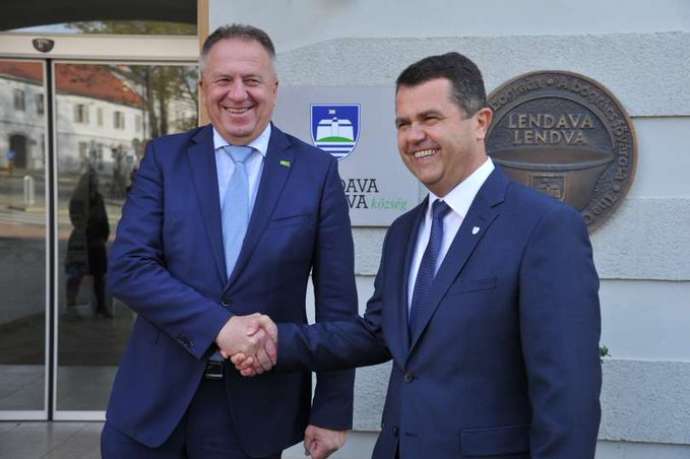STA, 19 November 2019 - The Slovenian and Hungarian automotive clusters signed an agreement to develop cutting-edge technologies which they hope would make them leaders in the transition to e-mobility. A technology and development business event held in Maribor on Tuesday was also attended by the Slovenian economy minister and Hungarian innovation minister.
The event was organised by the Chamber of Commerce from the Štajerska region in collaboration with the Hungarian Embassy in Ljubljana and the University of Maribor.
Economy Minister Zdravko Počivalšek said Slovenian companies were already taking part in the development of Hungary's test track for conventional and autonomous cars.
Slovenia's automotive industry generates around 10% of the country's GDP and 20% of its entire exports, so he deems technological solutions in this area a basis enabling companies from both sides of the border to become an important player in the global car industry.
He said today's meeting with Hungarian Minster for Innovation and Technology Laszlo Palkovics further "enhances our excellent bilateral cooperation", noting trade in 2018 totalled EUR 2.4 billion.
[GOSPODARSTVO] Minister za gospodarski razvoj in tehnologijo Zdravko Počivalšek in madžarski minister za inovacije in tehnologijo Laszlo Palkovics sta bila danes v Lendavi. #vestnik #nicsenezgodibreznas #slovenija #madzarska https://t.co/wFPA1Yw3yd
— Vestnik (@Vestnik_si) November 19, 2019
Palkovics added that this was one of the most exciting technological periods which would result in major technology changes to radically change people's lives. "Even if we are both small countries, we have to find our places in the development of high technologies," he said.
Zoran Ren of the University of Maribor said the university had worked with the universities in Austria's Graz and Hungary's Budapest on developing some components for Hungary's ZalaZone test track.
Od besed k dejanjem. V Mariboru pravkar podpisan sporazum o sodelovanju med Združenjem madžarskih proizvajalcev avtomobilskih delov in Slovenskim avtomobilskim grozdom. Skupaj z ?? ministrom dr. Palkovicsem dajeva razvoju avtonomne in brezogljične mobilnosti nov zagon. pic.twitter.com/IUqpS8h4pj
— Zdravko Počivalšek (@PocivalsekZ) November 19, 2019
"Today's event is important because it defines the future. New ties are being forged which will help design an orderly and safer mobility in the future," said Rem, the vice-chancellor in charge of scientific and research projects.
He said the first stage of the test track project, worth EUR 150 million, had already been completed, with the second one, worth EUR 50 million, now continuing.
Iztok Seljak of Hidria Holding, a supplier of car parts for many leading car producers, said the Slovenian Automotive Cluster was looking for breakthrough solutions to tap in the potential offered by the transition to a society based on e-mobility.
One such solution is wireless electric car charging, for which a special consortium has already won some start-up funds, he explained.
"We are first partnering up with Hungarians, then we will also with Austrians and other European partners to receive more development funds and to make sure this becomes a priority European project which will enable us to become a leader in e-mobility," Seljak said.
Meanwhile, the two ministers continued the meeting in the Slovenian border town of Lendava, where the topics included a revitalisation of the abandoned Nafta industrial complex, the use of local geothermal sources and innovative zero carbon energy generation.
Commenting on the industrial complex, Počivalšek announced the state was ready to provide a 20% investment subsidy to investments in Lendava.
"We agreed that we need to encourage cooperation of the Porabje and Prekmurje border regions, along with the Austrian border area - the building of the test track for electrical and autonomous vehicles in Zalaegerszeg is a very good basis for this," Počivalšek moreover said.
Palkovics said the two countries also wanted to strengthen cooperation in the phasing of EU funds.
He proposed that funding for research cooperation be upped to EUR 1 million and moreover argued that the situation of young people living near the border could be improved with cooperation among universities and secondary schools in both countries.
All our stories about Hungary and Slovenia are here






